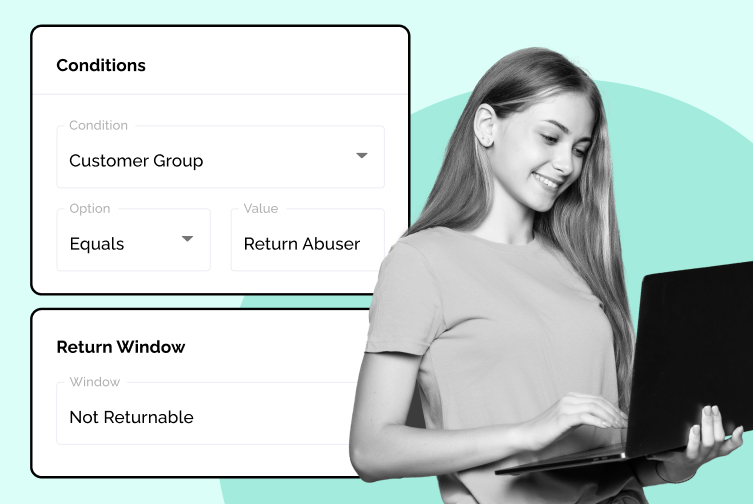
How to Block Return Abuse Without Hurting Good Customers
Learn how to manage BOGO returns effectively while ensuring customers aren’t charged for the free item. Practical solutions!
Boost customer experience and reduce support tickets
Realtime order and shipment tracking
Proactive order and shipping notifications
Predictive pre-purchase estimated delivery dates
Self-Serivce branded order tracking
Effortless experience delivered
Make returns profitable and delight customers
Flexibility to define any return destinations & conditions
Simplify returns for your customers and team
Incentivize exchanges over returns
Returns management made easy for your team
Understand why your customers are returning
Unify the online and the in-store experience
Hassle-free pickup experience for customers
In-Store Dashboard to keep operations streamlined
In-Store and Online orders unified
Drive foot-traffic to your stores
Boost customer experience and reduce support tickets
Realtime order and shipment tracking
Proactive order and shipping notifications
AI-Enhanced Discounted Labels
Predictive pre-purchase estimated delivery dates
Self-Serivce branded order tracking
Effortless experience delivered
Make returns profitable and delight customers
Flexibility to define any return destinations & conditions
Simplify returns for your customers and team
Incentivize exchanges over returns
Returns management made easy for your team
Equip your team for precise return checks.
Understand why your customers are returning
Unify the online and the in-store experience
Hassle-free pickup experience for customers
In-Store Dashboard to keep operations streamlined
In-Store and Online orders unified
Drive foot-traffic to your stores
Find the answer to all your questions
Explore the most comon questions about WeSupply
Calculate the ROI that WeSupply can bring you
Request a no strings attached review of your current shopping experience and missed conversion opportunities
Take a step by step trip through our functionality to see how we can improve your ecommerce processes.
Read actionable articles on how to optimize your post-purchase experience and decrease support tickets
Get inspired by stories of how our customers implemented an effortless post-purchase experience
A Deep Dive into Top Companies' Order Tracking & Returns Strategy
Wondering if WeSupply is a good fit for you? Read through our use cases to see how we can help you increase conversion & improve CX!
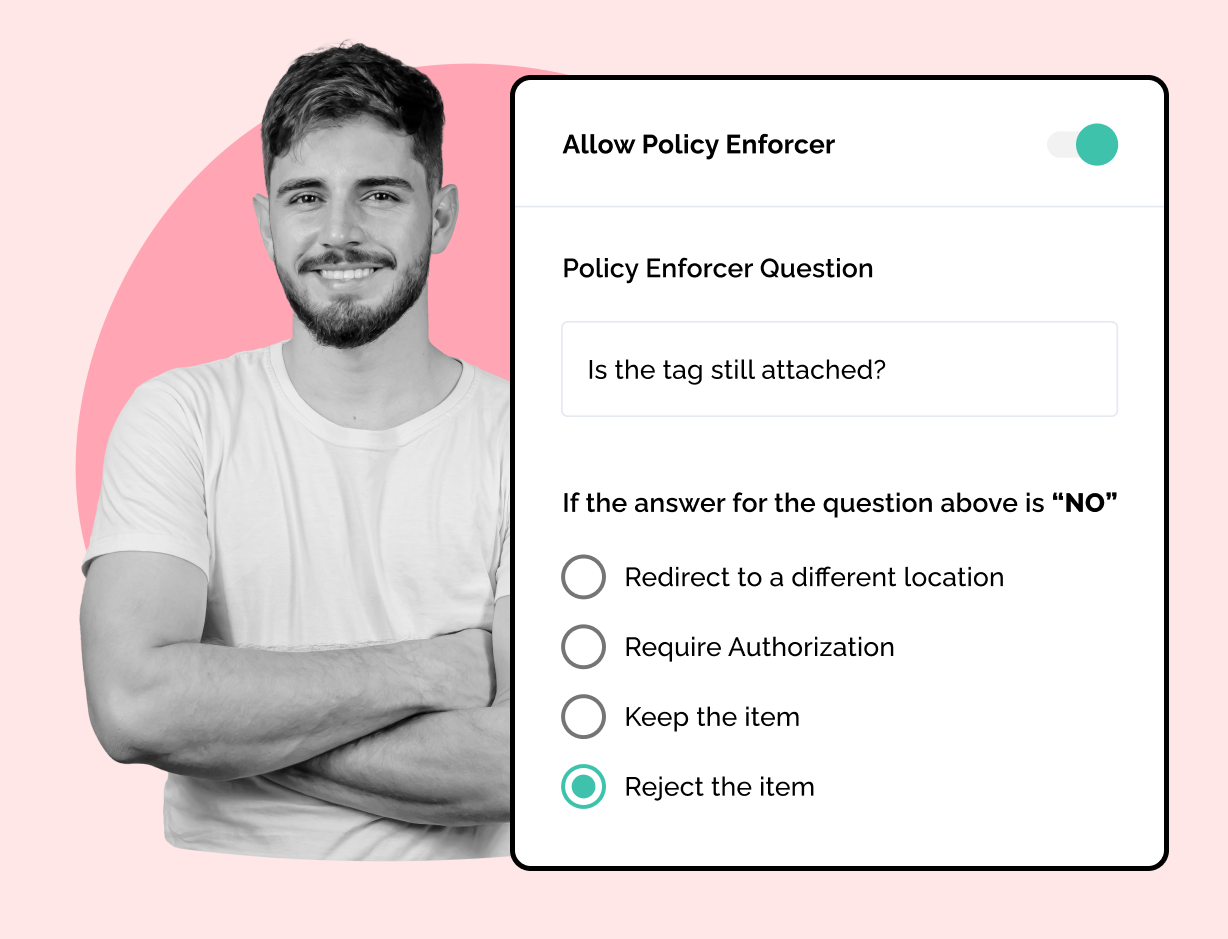
Wardrobing and tag-switching are two growing types of return fraud that plague fashion ecommerce retailers. These tactics aren’t just inconvenient they have a significant financial impact, resulting in substantial costs for businesses. The financial impact of wardrobing and tag-switching includes direct financial losses, increased operational expenses, and the erosion of brand trust over time. As ecommerce booms, fraudsters are finding increasingly sophisticated ways to “try before they lie,” leaving honest businesses to foot the bill.
But here’s the good news: preventing wardrobing and tag-switching is entirely possible without alienating your loyal shoppers. By combining clear policies, smart tech, physical deterrents, and customer education, you can strike the perfect balance between fraud prevention and great customer experience.
In this article, we’ll explore what wardrobing and tag-switching are, why they matter, and most importantly how your fashion ecommerce store can stop them.
Wardrobing is the act of purchasing a fashion item (like clothing, shoes, or accessories), using it once or twice often for a special occasion and then returning it for a full refund. It’s effectively “renting for free”, and it’s far more common than many retailers think.
According to the National Retail Federation (NRF), wardrobing accounts for nearly 15% of all fraudulent returns, costing retailers billions each year. For fashion brands, the impact is even more pronounced due to the nature of the products. Clothing worn even once may return with makeup stains, perfume smells, or sweat damage—making it unsellable.
These returned items often can’t be resold at full price, forcing businesses to mark them down or discard them entirely. Discarding unsellable returned online purchases contributes to a significant environmental impact, including increased waste, landfill overflow, and higher carbon emissions from additional shipping and disposal processes. That leads to lost revenue, increased operational costs, and inventory distortion.
Tag-switching occurs when a customer removes or replaces original tags with cheaper or older tags either to fraudulently return a product or to deceive customer support into issuing a refund or exchange.
This tactic is often used in-store, but ecommerce retailers are not immune. Customers may reattach tags incorrectly or send back a different, cheaper item altogether. Counterfeit product switches are another form of fraud that can occur during the return process, where fake items are swapped with genuine ones, making detection difficult. If your warehouse doesn’t closely inspect returns, you could be refunding hundreds of dollars for counterfeit or swapped products.
Both wardrobing and tag-switching share one thing: they exploit return policies that lack visibility, accountability, or enforcement.
Ecommerce return fraud takes many forms, each posing unique challenges for online retailers. Understanding these fraudulent practices is the first step to protecting your business, profit margins, and customer satisfaction.
Wardrobing return fraud is one of the most prevalent types, where shoppers purchase items often apparel or accessories use them for special occasion events, family photos, or even to create content for their social media accounts, and then return them for a full refund. This not only results in lost revenue but also disrupts inventory management, as returned merchandise may be unsellable at full price.
Tag switching is another common tactic, involving the swapping of price tags or return tags to exploit price differences or bypass return restrictions. Fraudsters may attempt to return a lower-priced item using the tag from a higher-priced product, undermining the integrity of your returns process and eroding customer trust.
A more sophisticated scheme is counterfeit product switching, where a customer returns a fake or imitation item instead of the genuine product they purchased. This type of return fraud is particularly damaging, as it can go undetected and lead to further losses if counterfeit goods re-enter your inventory.
These fraudulent activities not only impact your bottom line but also threaten customer loyalty and honest customers’ experience. To combat return fraud, ecommerce businesses are turning to solutions like tamper evident security seals such as the 360 ID Tag to deter wardrobing and tag switching. Monitoring returns data and enforcing strict, transparent return policies are also essential strategies to safeguard your operations.
By recognizing the different types of ecommerce return fraud, retailers can develop targeted approaches to protect their profit margins, maintain customer satisfaction, and foster long-term customer loyalty ensuring that honest customers continue to enjoy a seamless and trustworthy online shopping experience.
Fashion ecommerce faces unique challenges when it comes to fraud prevention:
High volume of returns: Fashion has one of the highest online return rates often exceeding 30% making it harder to identify bad actors from honest customer.
Frequent product launches: New styles and collections every season make it difficult to track fraudulent behavior tied to specific SKUs.
Lack of in-person validation: Unlike physical stores, ecommerce return verification relies solely on internal inspections and digital policies.
The anonymous nature of online returns makes it easier for fraudsters to exploit ecommerce merchants, as there is less opportunity for direct verification and tracking. Effective returns management is essential for ecommerce merchants to address these vulnerabilities, streamline the return process, and prevent losses from return abuse.
These factors make it easy for dishonest customers to take advantage of lenient return processes—especially during holidays, wedding seasons, and large promotional events.
Your return policy is your first line of defense against abuse and it needs to be both customer-friendly and fraud-proof.
Instead of vague language like “returns accepted within 30 days,” include precise conditions: items must be unworn, tags attached, and packaging intact. Be transparent about items that are not eligible for returns, such as final-sale items or intimates.
Set clear and reasonable return rules, such as time limits, return fees, and requirements for special return tags, to help prevent policy abuse like wardrobing or tag switching. This approach protects your business from fraudulent activity while ensuring that legitimate returns from genuine customers are still accepted.
You can also require photos before return approval to document the condition of the item and prevent fraudulent claims. Some fashion retailers go a step further by denying refunds for visibly worn or damaged items and issuing store credit instead.
Most importantly, publish your policy clearly on your website, in confirmation emails, and in your return portal. Customers should never be surprised by the rules.
One of the most effective tools against wardrobing is the anti-wear tag a tamper-evident, single-use security solution known as a return tag. This type of tag is designed to prevent return fraud by making it obvious, tamper-resistant, and impossible to hide.
Popular tools like the 360 ID Tag or R-Turn Tag are large, brightly colored return tags attached to visible parts of the garment. Customers can try on the item, but they can’t wear it in public or remove the tag without voiding the return.
These tags often include return instructions printed directly on them: “Do not remove this tag unless you’re keeping the item.” If returned with missing tags, the product is ineligible for refund and this is a red flag for potential fraud.
Retailers using tamper-evident tags and tamper evident security seals as additional layers of protection have reported up to 50% reduction in wardrobing. The deterrent effect is immediate: customers think twice when they know the return will be scrutinized.
Your fulfillment or warehouse team plays a critical role in identifying fraud. Training staff to identify wardrobing is essential, as this type of return fraud can be difficult to detect without proper knowledge and tools. Train them to inspect for:
Strong perfume or deodorant odors
Deodorant marks, makeup smudges, or sweat stains
Altered, replaced, or repositioned tags
Shoes with scuffed soles or dirt
Signs of laundering
Manual inspections for these signs increase the labor burden and labor costs for your business, as staff must dedicate additional time and resources to quality checks and documentation.
Empower your staff to flag and reject questionable returns in accordance with your policy. Document rejected returns with photographs and notes to maintain an internal record and communicate with the customer clearly and respectfully.
You can even incorporate barcode scanning to verify that the returned item matches the original order. Return processing is a critical part of staff responsibilities, ensuring that all returns are handled efficiently and in line with company procedures.
Manual inspections can only go so far. Ecommerce retailers are now using AI and machine learning tools to detect repeat offenders and suspicious return behaviors, including returns abuse, at scale.
Platforms like WeSupply integrate AI-powered return workflows that automatically:
Flag customers with excessive return rates
Monitor patterns of frequent returns
Detect multiple accounts from the same IP address
Analyze the time between delivery and return request
Check for duplicate return reasons or vague justifications
This data can be used to segment your customer base into trustworthy and high-risk profiles. You can then apply stricter rules such as return windows or restocking fees only to flagged accounts, preserving the experience for everyone else. Streamlining returns management with automation also helps reduce support tickets by minimizing manual intervention and improving customer service efficiency.
For luxury fashion or limited-edition drops, requiring photo or video evidence before a return can stop fraud before it starts.
Ask customers to upload:
A clear photo of the item with tags attached
A timestamped video showing the item condition
A shot of the original packaging
This additional step deters scammers who never intended to return the correct item. It also gives your team a visual baseline to compare against the item received.
Some platforms (including WeSupply) automate this process during the return request flow, allowing customers to easily initiate returns through digital portals. This enhances customer convenience by making the process user-friendly and efficient, while still maintaining necessary fraud prevention measures.
If a customer has a history of return abuse repeated wardrobe use, tag tampering, or mismatched returns it’s time to take action.
Use your return management system to track customer behavior over time. Look for patterns like:
Multiple large orders with full returns
Abnormally short wear-to-return timelines
High-value items returned consistently
Signs of wardrobing fraud, where items are worn and then returned
Return fraud wardrobing, where customers purchase items for one-time use and return them
Once flagged, you can restrict these accounts by:
Disabling free returns
Requiring approval before issuing refunds
Denying return eligibility for certain product categories
Some retailers even create internal blacklists or work with fraud databases to share insights across platforms. Just be sure your actions are consistent with your return policy and local consumer laws.
Fraud prevention doesn’t always require confrontation sometimes it just takes a little education.
Use your product pages, return confirmation emails, and packaging inserts to communicate the impact of return abuse. Let customers know:
What happens to worn or damaged items
How return fraud increases prices for everyone and affects commerce businesses through financial losses and operational challenges
That returns are inspected for wear and policy compliance
Many customers may feel pressured to abuse return policies due to the false reality created by social media influencers, who often showcase new outfits to maintain their online image. This curated image can drive consumers to engage in practices like wardrobing to keep up with trends.
This transparency builds trust with honest customers and discourages dishonest behavior. Consider rewarding honest behavior to incentivize genuine purchases and returns. Shoppers are far less likely to abuse your policy when they know you’re watching and that you care about sustainability, fairness, and product integrity.
Some shoppers wardobe because they’re unsure about fit, color, or style especially when they can’t try on items before purchasing. To reduce uncertainty (and abuse), offer digital tools that improve buying confidence:
Virtual try-on experiences using augmented reality
Fit quizzes or size recommendation engines
Detailed customer reviews with photos
User-generated content (UGC) to showcase how items look on real people
By reducing the guesswork, you reduce the likelihood of intentional or unintentional returns. These solutions not only lower return rates but also encourage future purchases by building trust and loyalty. This is especially important for e commerce businesses and the broader retail industry, where return fraud and wardrobing can significantly impact revenue and operations.
Retailers using virtual try-ons and UGC have reported a 15–30% reduction in return rates, especially for apparel and accessories.
Combat return fraud with Policy Enforcer
Book a quick call with our experts to see how WeSupply can help you automatically approve, reject, or flag returns and exchanges for manual review based on conditions you set. Have a complicated return policy? Not a problem, we can automate it.
Wardrobing (wear-and-return) and tag-switching are major return fraud tactics that cost fashion retailers millions every year. But preventing abuse doesn’t have to come at the expense of customer experience. WeSupply empowers fashion ecommerce brands to build smarter, more secure return policies tailored to every product, customer, and situation.
Here’s how WeSupply helps you take control:
✅ Tiered Restocking Fees: Discourage wardrobing by adding time-based restocking fees charging more the longer a customer holds onto an item.
✅ Image Upload & Feedback Collection: Require shoppers to upload images and feedback before return approval. This helps identify worn, damaged, or tampered products and reduces fraud before items are even shipped back.
✅ Return Reason-Based Shipping Fees: Automatically charge or waive return shipping based on the reason selected ensuring free returns aren’t abused for buyer’s remorse or wear-and-return scenarios.
✅ Returns Analytics: Track your most-returned products, identify repeat offenders, and spot suspicious return trends. Access deep insights via WeSupply’s dashboard or export to BigQuery for advanced analysis.
✅ Blocklist Repeat Offenders: Instantly block serial returners by email or customer group to prevent ongoing abuse without impacting loyal shoppers.
✅ Smart Product Dispositions: Streamline how returned items are processed (restock, inspect, discard, etc.) based on return reason and product type.
✅ Clearly Mark Non-Returnable Items: Remove the guesswork with clear labeling for:
Final sale items
Non re-sellable products (e.g. worn or hygienic goods)
Items past the return window
Blocklisted customers
With WeSupply, fashion brands can confidently protect themselves from fraud while still offering a smooth and transparent return experience that earns long-term customer trust. Book a demo today!
Wardrobing and tag-switching can seriously impact your bottom line, but cracking down on every shopper isn’t the answer. The key is striking the right balance protecting your business while still delivering a great customer experience.
With WeSupply, you can do just that. From flexible return rules and restocking fees based on return timing, to photo uploads for proof and product condition, every part of your return flow becomes smarter. You can clearly mark non-returnable items, block repeat offenders, collect actionable insights through analytics, and automate product dispositions. Even return shipping costs can be adjusted based on the customer’s reason.
With WeSupply’s branded return portals and transparent workflows, you don’t have to choose between customer satisfaction and fraud prevention you can have both.
Combat inconvenience with proactivity & self service
Book a quick call with our experts to see how WeSupply can help you make returns easy for your customers with a beautiful, self-service solution that makes their experience easier while also providing new ways to lower costs and earn back revenue.
Keep your customers engaged during the delivery experience
Book a quick call with our experts to see how WeSupply can help you engage your customers with relevant updates through the right channel, at the right time.
1. What is wardrobing in fashion ecommerce?
Wardrobing is when a shopper buys clothing, wears it once (often for events), and returns it for a full refund. This return fraud causes massive financial and environmental losses for fashion retailers.
2. How can fashion retailers stop tag-switching fraud?
Retailers can prevent tag-switching by using tamper-evident return tags, training staff to inspect returns closely, and requiring photos or video proof before approving refunds on high-risk items.
3. Why is wardrobing return fraud a big problem for online fashion stores?
Wardrobing makes returned items unsellable due to wear, makeup, or odors. This leads to lost revenue, distorted inventory, and increased waste hurting both profitability and sustainability efforts.
4. How does WeSupply help prevent wardrobing and tag-switching?
WeSupply enables retailers to set stricter return rules, require photo proof, charge restocking fees, and block repeat abusers all while maintaining a seamless return experience.
5. Can WeSupply automate fraud detection in returns?
Yes. WeSupply uses return analytics and shopper behavior tracking to flag suspicious patterns, prevent repeat abuse, and guide automated dispositioning of returned items.
6. Does WeSupply support image uploads for return validation?
Absolutely. WeSupply’s branded return portals allow shoppers to upload item photos and feedback before approval helping verify item condition and reduce fraudulent claims.
7. Does WeSupply have an Official Shopify App?
Yes. WeSupply has an Official Shopify App. You can download it and start integrating with your Shopify Store.
8. Does WeSupply have an official Magento extension?
Yes, WeSupply has an official extension for Magento. The WeSupply x Magento integration allows for automating order tracking experiences, reducing customer inquiries, automating shipping email and SMS notifications, and providing a fully branded order tracking experience
9. Does WeSupply have an official BigCommerce App?
Yes, WeSupply has an official BigCommerce App. You can integrate WeSupply with your BigCommerce store to improve your post-purchase customer experience.
Learn How To Create Successful Post Purchase Email Campaigns
Build an effective post-purchase email flow that helps you increase customer satisfaction and drive revenue growth!

Learn how to manage BOGO returns effectively while ensuring customers aren’t charged for the free item. Practical solutions!
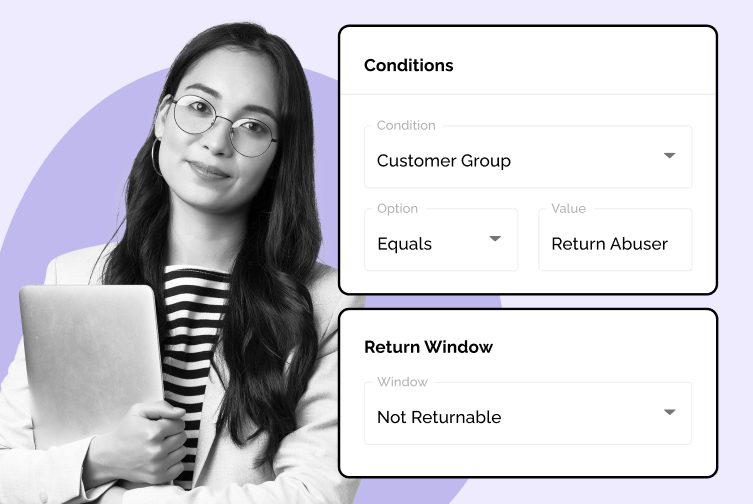
Explore how automation and data can enhance your shipping strategy. Discover best practices to stay competitive and efficient. Read the article now!

Discover effective strategies to prevent return promo abuse with smart logic. Enhance your business’s integrity!

Learn how to effectively manage promo bundle returns while protecting your revenue. Discover practical tips to streamline your process!

Learn how to manage BOGO returns effectively while ensuring customers aren’t charged for the free item. Practical solutions!
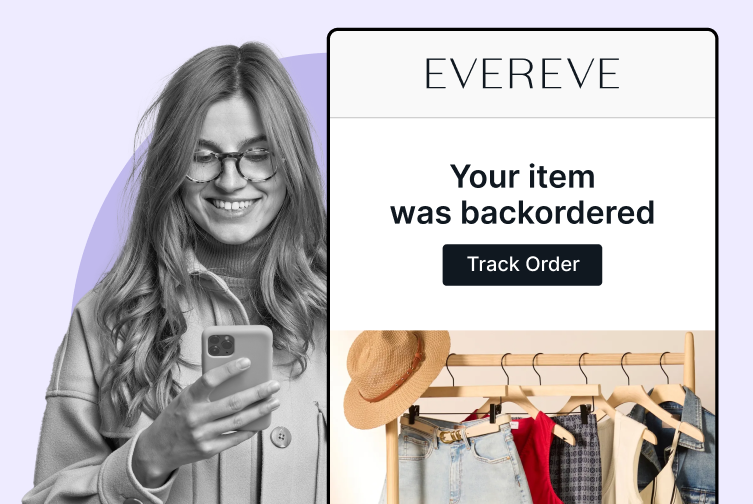
Explore how automation and data can enhance your shipping strategy. Discover best practices to stay competitive and efficient. Read the article now!

Discover effective strategies to prevent return promo abuse with smart logic. Enhance your business’s integrity!
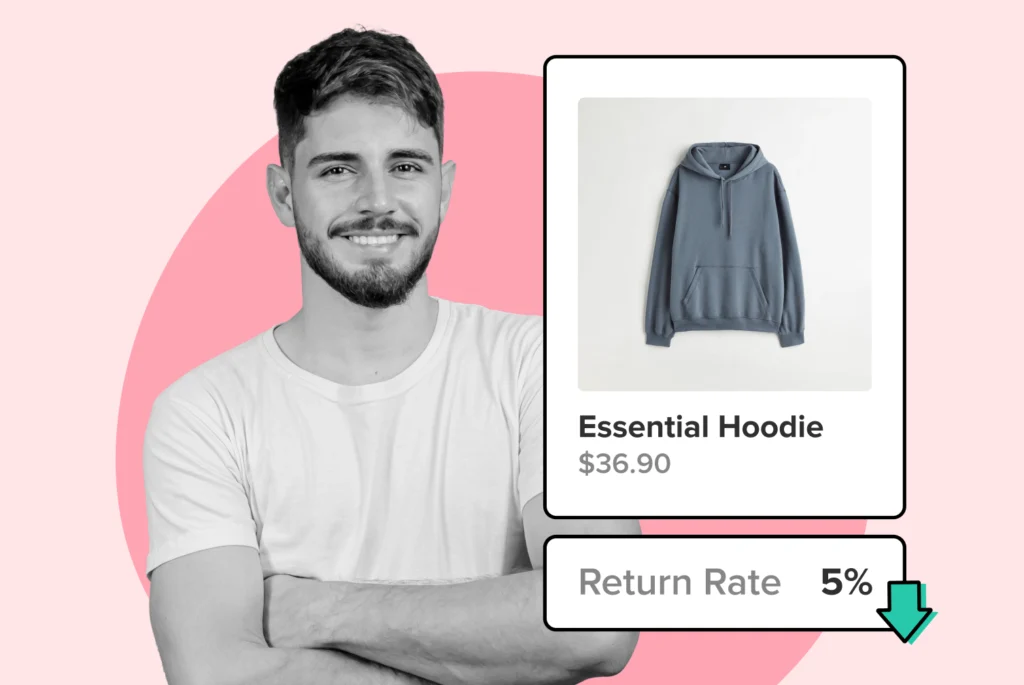
Learn how to effectively manage promo bundle returns while protecting your revenue. Discover practical tips to streamline your process!
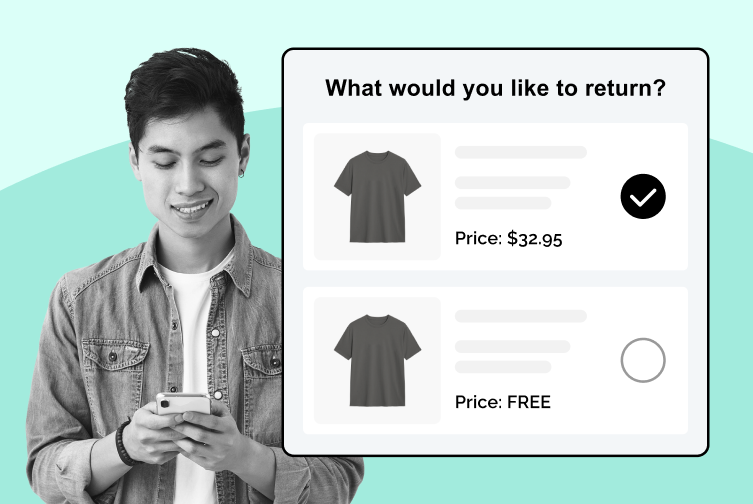
Learn how to manage BOGO returns effectively while ensuring customers aren’t charged for the free item. Practical solutions!